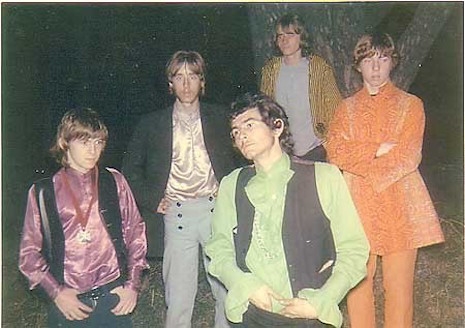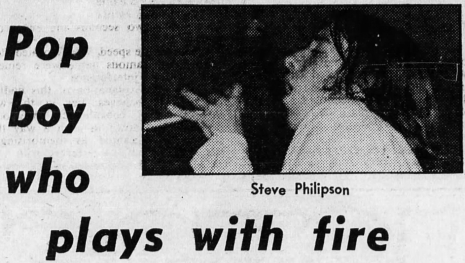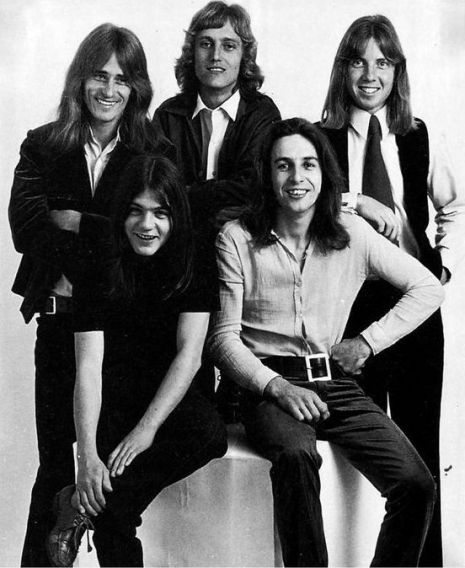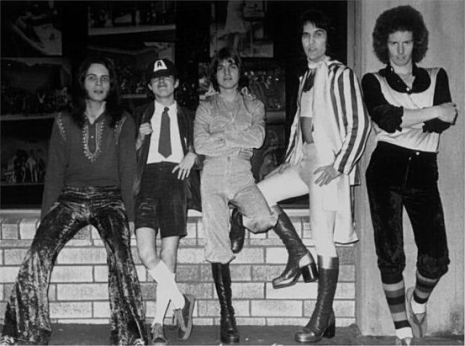
Did you know there was another 1960s group called the Velvet Underground? The American Velvet Underground are now pretty much a household name, but for years, the Lou Reed-fronted group from New York was an obscure cult act. Formed in 1965, they were named after this lurid 1963 paperback. Considering the stateside VU weren’t well known in the ‘60s, and that the book’s name and what it represented might appeal to another rock band, it should come to know surprise, really, that another group—a world away—might settle on the same moniker. There’s also the possibility that it had been selected by this other Velvet Underground because they thought the American group would be quickly forgotten.
The Australian Velvet Underground first got together in Newcastle during 1967, the same year The Velvet Underground & Nico was released. The five-piece band were quite popular and gigged frequently in the area. At the conclusion of their shows, the group’s Jagger-esque frontman would dose himself with lighter fluid and put a match to his clothes. The fire would usually extinguish quickly, but on at least one occasion it didn’t—he was burned so badly that he required medical attention. VU setlists consisted primarily of covers for much of their five-year existence, which was partly due to the fact that they had trouble agreeing on how to present original material.
I recently interviewed David Schofield, the original bassist of the Australian Velvet Underground.
When/where did the band form? Who was in the original lineup?
David Schofield: The band formed in Newcastle in 1967. I was visited at home by a couple of the members of a band called the Ouebbe (Web) and Steve Phillipson who had just arrived in Newcastle from Zillmere in Queensland. I don’t know how they found me other than the fact I had been playing in a little-known band called the Trend.
The first rehearsal was at a community hall in Tarro. It’s still stuck in my mind’s eye. It appeared that there had been a party there the night before and Steve was doing his very original moves on top of broken beer bottles glass. First impression was that wow, this is so bloody different to what’s going on in Newcastle at the moment. Steve had been the president of the Queensland Rolling Stones fan club and his moves were like Jagger’s but with his own interpretation. Obviously, we took on some Stones songs but there was a very strong contingent of Small Faces stuff. Hendrix, Steppenwolf, the Who and the Doors made up the rest of the repertoire.
The original lineup was Steve Phillipson (v) Russell Bayne (g) Mark Priest (k/b) Herman Kovacivic (Kovac) (d) myself (b) . Russell left after me in 1968 and joined Pyramid in Sydney. He was replaced by Les Hall.

How did the band come up with the name Velvet Underground?
David Schofield: We were living in a house in Islington. Various names were tossed around with Steve staying unusually silent. He waited until we had rejected everything and then suggested Velvet Underground. At this time the original VU were not heard of in Australia. We thought it was bloody amazing for him to come up with something so unique. My theory is: Steve bought the muso paper the New Musical Express and he may have noted a small reference to the original VU thinking that they may not go too far.
Your singer set himself on fire on stage. How was the stunt executed?
David Schofield: The fire stunt was usually performed during “Fire” by Jimi Hendrix. Steve had a very thick leather bomber jacket from an op shop [a thrift store, ala the Salvation Army]. He put lighter fluid on the arms and lit it while homemade smoke bombs (firecracker powder) were ignited behind the amps.

Are there any studio recordings of the original lineup?
David Schofield: An acetate recorded in Newcastle. One side, the Small Faces’ “All or Nothing”; forget side B.
How long were you in the Velvet Underground?
David Schofield: I was in the group for twelve-eighteen months. I departed due to the band leaving for an east coast tour which I couldn’t join due to my day job as an electrician.
What are you up to these days?
David Schofield: I am now retired living in Queensland. After VU I jointly formed a group named Maya in Newcastle but left to live in England. Recently I attempted to play again in a swampy, bluesy group but couldn’t hack it. I was getting home close to the time I would usually wake up.
*****
The group relocated to Sydney during the early months of 1969. In January 1970, the Australian label, Festival, issued the only record by the Australian Velvet Underground. The 45 consisted of two covers: “Somebody to Love,” a song made famous by the Jefferson Airplane, and “She Comes in Colours,” written by Arthur Lee and originally recorded by his band, Love. The VU’s overtly psychedelic version of “Somebody to Love” is the clear winner here, so it’s no surprise it was picked to be the A-Side. Both recordings show the influence of the Doors.
At some point later in 1970 or in 1971, Steve Phillipson bailed on the band. The remaining members began looking for a new singer, but they were also on the hunt for an additional guitarist. In ’71, they recruited two relative unknowns to fill the spots: Andy Imlah became their vocalist, and Malcolm Young would be second guitarist. The new lineup incorporated a few originals into their live show, but it still consisted primarily of cover tunes, including songs by the Stones and T. Rex. Around 1972, VU started playing gigs in which they’d play their own set, and then back another singer, Ted Mulry. By late 1972 or so, the group had morphed into the Ted Mulry Gang, and the Australian Velvet Underground were no more.

The Velvet Underground, ca. 1972. Malcolm Young is sitting on left.
Malcolm Young had already left the band by then, as he was itching to get his own thing going. The following year, the initial lineup of AC/DC—with Malcolm and his younger brother, Angus—was in place.

First AC/DC photo session, July 1974.
The VU’s 1970 single is now quite rare. Only one copy has ever sold on Discogs, for example, and it went for 116 bucks; there currently aren’t any listed on the site. I found two compilations with the tracks—one on each comp—and though they are both out of print, they are easier to come by. Festival Records included “Somebody to Love” on their 1977 collection, So You Wanna Be A Rock ‘n’ Roll Star Volume 2 (The Psychedelic Years Of Australian Rock 1967-70); “She Comes in Colours” is on the 1993 Arthur Lee/Love tribute album, Sixties Rebellion, Vol. 8: Mondo Mutiny 1: Love, which was put out by Music Maniac Records.
We’ll bid you adieu with the earliest known AC/DC live recording, which is from a March 1974 gig at the Hampton Court Hotel in Sydney. The singer isn’t Bon Scott, it’s Dave Evans, AC/DC’s original vocalist. Evans also fleetingly sang for the Velvet Underground, when the group was on its last legs.
Thanks to Kevin Chisholm of the Newcastle Bands Database.
Previously on Dangerous Minds:
A mysterious army of angry Velvet Underground fans respond to negative review of first VU show, 1965
Buffalo: Australia’s answer to Black Sabbath